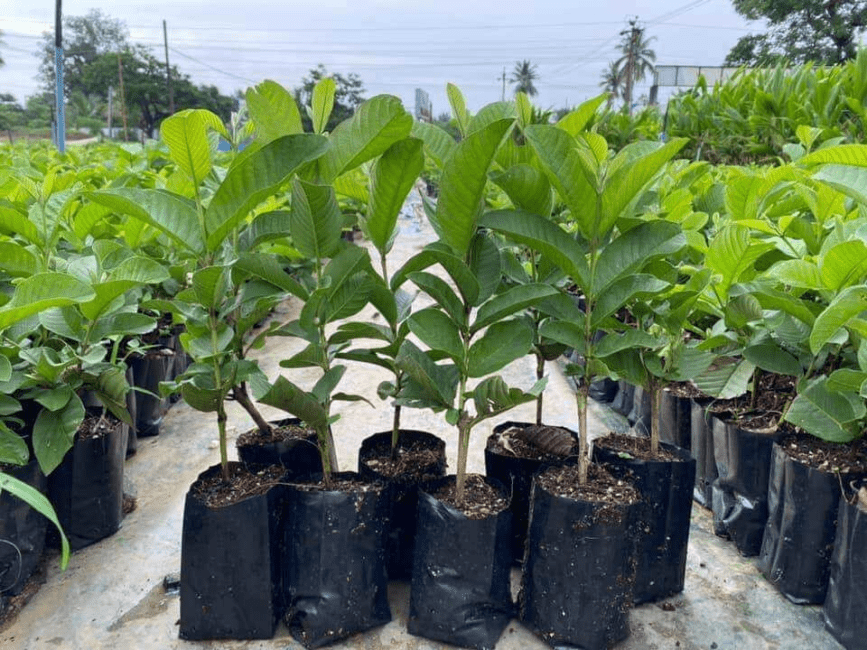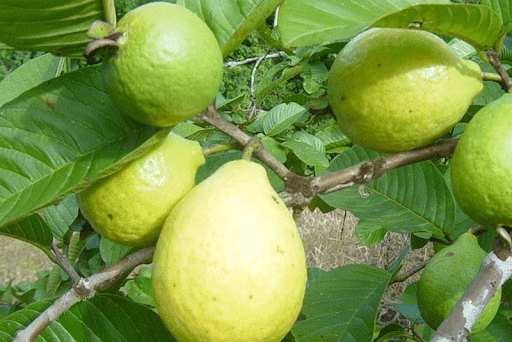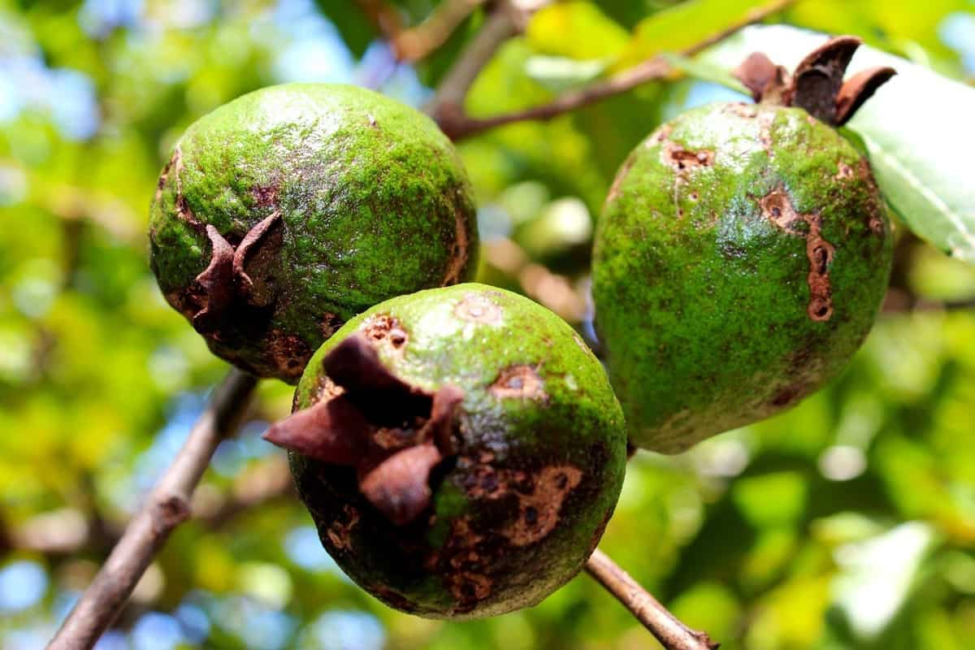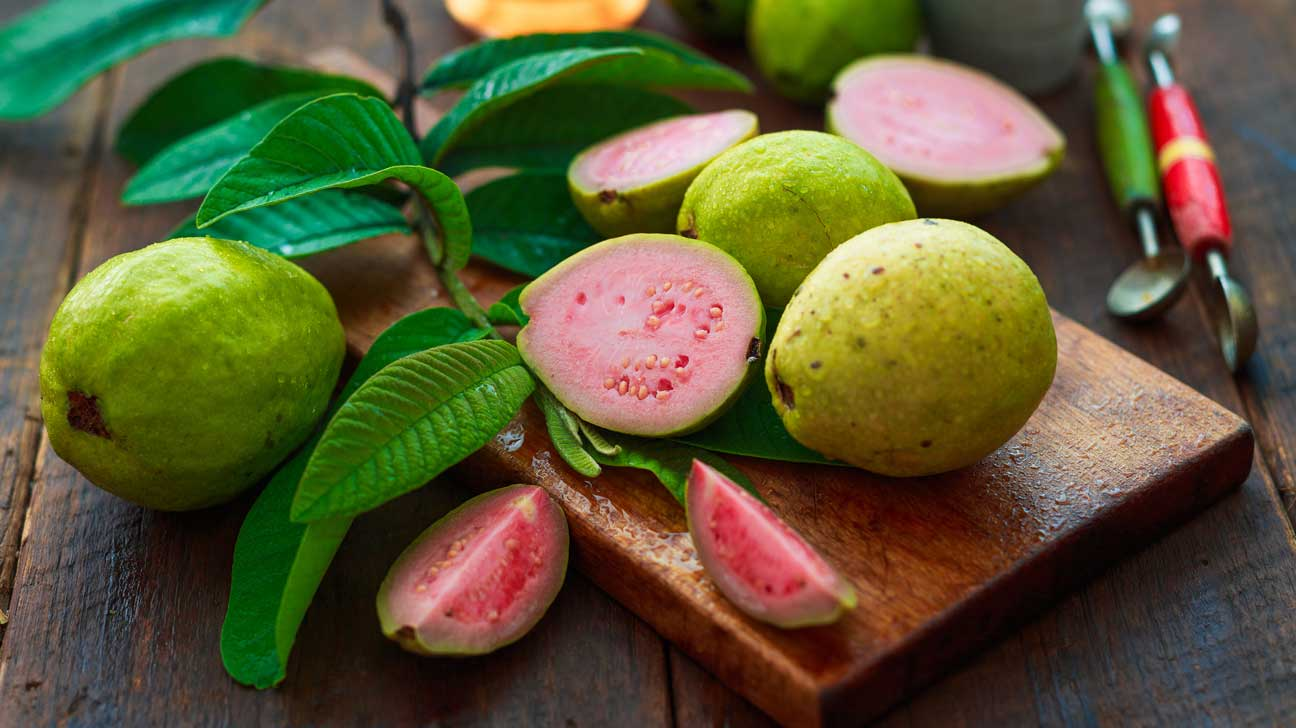Guava (Psidium guayaba) is becoming one of the most important fruits in Nigeria. In the past, it wasn’t considered important because it was mistakenly believed that eating it could cause appendicitis (inflammation of the appendix).
However, guava is rich in vitamin C, making it an economically valuable fruit. Guava grows well throughout Nigeria and produces abundantly in dry areas if irrigated during the dry season.
1. Field Site
Guava can grow in almost any soil but thrives best in well-drained sandy soil. Avoid planting in heavy soils as it can hinder growth, especially during dry periods.
2. Varieties
The following guava varieties are recommended for cultivation:
- Jumbo White.
- Ruby Supreme.
- Webber Supreme.
- Branca Arredondede.
- Supreme.
3. Propagation
To get guava trees that produce uniform and high-quality fruits like the mother tree, avoid propagating guava from seeds. Instead, use vegetative propagation methods such as grafting, rooting of hardwood cuttings, and stooling, as described in the earlier section.
Read Also: The Guava Peduncle: Economic Importance, Uses, and By-Products
Nursery Establishment

1. Sowing Seeds and Raising Rootstock:
Guava seeds remain viable for up to one and a half years after extraction but should be planted as soon as possible. Sow the seeds in trays with light sandy loam soil, covering them to a depth of 1 cm.
Once seedlings develop their second leaves, transplant them into the nursery, spacing them 75 cm between rows and 30 cm between plants. Grafting can begin when seedlings are as thick as a pencil, ideally between May and September when the weather is moist.
2. Selection of Scion:
For veneer grafting, select scion shoots from the current season’s growth that are green and quadrangular. Defoliate the scion one week before removing it from the mother plant to activate the buds. After cutting, wrap the scion in moist newspaper and pack it in polythene bags. Graft the scion onto rootstock as soon as possible.
3. Grafting Technique:
Make a 3.5 cm slanting cut on the rootstock and ensure both parts fit perfectly together. Secure the graft with polythene tape. The scion should sprout in about 21 days, at which point you should remove the upper part of the stock. After 45-50 days, cut off the stock just above the graft. Your grafted plant is now ready for planting.
4. Rooting of Hardwood Cuttings:
Collect leafy hardwood cuttings, make four vertical incisions at the base, and dip the cut ends in a solution of Indole Butyric Acid (IBA) 250 ppm (in 50% alcohol). Plant the treated cuttings in the shade. Roots should appear in 25 days.
Then, transfer the rooted cuttings to large pots or polythene bags with well-manured soil. The plants will be ready for transplanting in 15 days and can be further propagated using the stooling technique.
5. Stooling:
Establish stooling plots by planting cuttings from selected trees. In the following year, cut the plants back to 30 cm in height in March. New shoots will emerge, and you should ring and remove the bark near the base, applying IBA paste (500 ppm) in lanolin. Cover the ringed portion with soil after 10 days. This process will yield rooted shoots each year, ready for transplanting.
Orchard Planting and Aftercare

Guava grafts are sensitive and need careful handling when transplanting. Cut the taproot after the first rains to encourage fibrous roots. After 45-50 days, remove the grafts from the nursery with a ball of earth.
If the graft is large, prune the branches to reduce the leaf area. In extreme cases, remove all leaves before transplanting to reduce mortality. Plants raised by stooling or cuttings are easier to transplant, as they are already settled in polythene bags.
Dig planting holes 50 cm x 50 cm at a spacing of 7 m x 7 m, filling the pits with a mixture of soil and compost. Plant one guava tree per hole, water immediately after planting, and continue watering during dry periods. Mulch around the plant base to retain moisture.
Fertilizer Application
Fertilizer should be applied in a ring 30 cm from the guava plant, similar to other crops. The following fertilizer schedule is recommended:
1st year: 50 gm of NPK mixture (1:1:1) in one dose.
2nd year: 300 gm of NPK mixture (1:1:1) in three doses.
3rd year: 450 gm of NPK mixture (1:1:1) in three doses.
4th year: 600 gm of NPK mixture (1:1:1) in three doses.
5th year: 600 gm of NPK mixture (1:1:1) in three doses.
Intercropping with leguminous or vegetable crops is possible for up to 3-4 years.
Weed Control
Weed control in a guava orchard can be done manually by slashing or using mowers. Ring weeding is important when the seedlings are small, and total weeding should be done at 1-2 month intervals, depending on the season. Contact herbicides like paraquat and glyphosate may be used as recommended. Intercropping with cover crops can also help control weeds. Keep the orchard clean at all times.
Read Also: The Guava Juice: Economic Importance, Uses, and By-Products
Harvesting, Packing, and Transportation
Guava should be harvested when the fruits start yellowing, except for green varieties like Jumbo White. For distant markets, harvest mature green fruits. Guavas are usually harvested into well-ventilated baskets or wooden crates. Harvest fruits for processing according to factory standards and requirements.
Pests and Diseases

Common pests in guava fields include:
1. Homeecerus pallens: Attacks the fruits.
2. Pachnoda spp: Feeds on fruits.
3. Argyoploce spp: (False codling moth) Attacks the leaves.
Control: Spray the crop weekly with an insecticide, such as Ambush, at a rate of 4 ml per 10 liters of water. Use clean, potable water.
Guava generally has few major diseases, but you may notice fungal diseases causing leaf and fruit spots. Spray with fungicide as needed. Fruit rot in guava is usually caused by fruit worms.
For successful guava cultivation:
1. Select well-drained sandy soil.
2. Use recommended varieties.
3. Water immediately after planting and during dry spells.
4. Apply mulch as needed.
5. Follow the recommended fertilizer schedule.
6. Control weeds regularly.
7. Harvest when fruits start yellowing.
In summary, guava is an economically valuable fruit in Nigeria for instance due to its high vitamin C content. It can be propagated both sexually and asexually, with vegetative propagation methods like veneer grafting, rooting of hardwood cuttings, and stooling being most effective. Guava has fewer pests and diseases compared to other fruit crops in Nigeria.
Read Also: The Guava Leaves: Economic Importance, Uses, and By-Products
Read Also: Improve Your Soil: Composting Facts to Create Nutrient-Dense Soil

